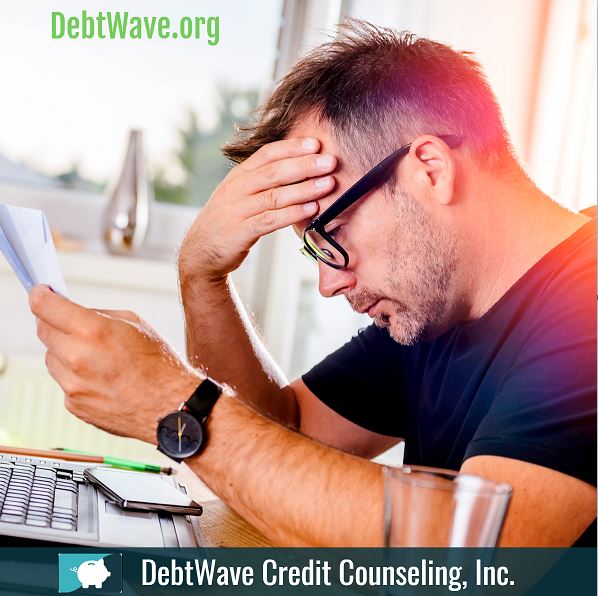Self-employment usually attracts people for its benefits: flexible work hours, freedom to be your own boss, and the potential for unlimited income. But self-employment can also be very costly, especially when it comes to credit card debt.
Business expenses and irregular income are the two main reasons why self-employed persons typically have higher amounts of credit card debt. That higher debt amount also means credit card companies are more likely to charge you a higher interest rate.
Specifically, self-employed individuals pay about $1,194 in credit card interest annually, while those working for other people pay $843 annually and retirees pay about $684 annually in credit card interest, according to an analysis by Nerd Wallet.
If you’re a small business owner without credit card debt, congratulations! While you may have escaped the chains of debt this round, most businesses experience hard times. How you respond to those financial challenges will determine whether your business survives another round or becomes an economic casualty.
How to Payoff Credit Card Debt When You’re Self-Employed
-
The Price of Self-Employment
What makes paying off credit card debt for self-employed individuals more difficult than those working for others or retirees, is that your income and your personal finances are not separate. In other words, the debt that can cripple your business can also disrupt your personal finances and vice versa.
To eradicate credit card debt typically requires frequent and consistent payments over a period of time. For those who are paid weekly, bi-weekly or even monthly, you come to know how much each paycheck is worth and you create your budget accordingly. If you’re a small business owner, your income may not be consistent, especially if your business is just starting out. As a result, your finances make it less convenient to pay off credit cards.
While credit card companies cannot garnish income from a self-employed person operating as a sole proprietor, nor can they grab your tax refund, they can obtain legal permission to seize money from your personal bank account. Credit card companies can also put liens on any properties you may own.
Tips to Maintain Healthy Finances for Self-Employed Individuals
-
Avoid Using Credit Cards & Home Equity Lines of Credit to Boost Your Cash Flow
Here’s why:
The money you borrow to cover expenses during the short-term will have to be paid back eventually, which means you’ll have to reduce your cash flow in the future in order to pay back what you borrowed, plus interest. While your problems may be solved in the short-term, borrowing more money may extend the financial crisis you’re experiencing for a longer duration.
Tip: If you’re self-employed and your income is down, consider a side hustle, renting out a room in your home on Airbnb, using your savings, selling items you no longer use and cutting expenses to ride out the financial storm. If you have a seasonal business and you’re looking for a short reprieve, consider asking your creditors about a forbearance or hardship program that will give you more time to pay your debt.
-
Learn to budget with an irregular income.
Here’s why:
If being self-employed is what you want to do, even if you’re aware of the financial roller coaster that comes with the professional freedom of self-employment, you’ll have to learn how to create a budget that works for your turbulent earning levels.
Set aside a percentage of your income instead of a specific dollar amount to go toward paying off credit card debts. If you have more money left over at the end of a month, you can make an additional payment toward your credit cards.
Tip: To determine a percentage that works for your budget, first, look at the average income you’ve earned in the past few months. Second, determine a bare-bones budget for necessary living expenses. Third, determine if you can use your discretionary income (the amount of “fun money” you have left after you pay your bills/expenses)
-
Get paid faster.
Here’s how:
Automate your invoices so that you can spend less time on administrative tasks. Offer a discount to clients who pay you within 10 days of receiving their invoice; request clients pay a 50 percent deposit toward the service or project upfront; charge late fees if you don’t receive payment within the allotted time; up-sell items and/or services to current clients; and negotiate a higher rate with current clients.
Paying Off Debt When Self-Employed
Think of your new financial strategy as a long-term change, not a short-term solution. If part of the reason you’ve found yourself in a financial bind is that you’re a big spender, consider modifying your daily habits.
Kumiko Ehrmantraut, founder of The Budget Mom, a personal finance blog, said it took her two years to pay off $7,500 she owed in credit card debt. How did she do it?
“I’m a long-distance runner, and running is free,” Ehrmantraut said. “So instead of shopping on Saturdays — which I would usually do, I’d go to the mall specifically looking for clothes — I would go on a two-hour run.”
Are you a small business owner working to pay off credit card debt? Share your frustrations and success stories in the comments below!


